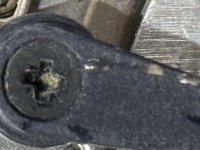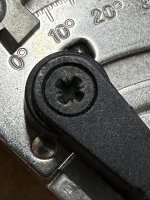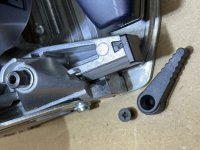woodwrights_corner
Member
- Joined
- Jan 31, 2007
- Messages
- 74
This was mentioned in one of the above comments, but I know it was not emphasized enough.
HEAT, HEAT, HEAT.
Use a hair dryer or whatever you think is best to soften any lock tite type material that may be on that screw. It would been applied at the factory. Regardless of what method you are going to use to remove the cammed out fastener, use heat. Call Festool service and try to get to a tech that works on the tools. Find out if this fastener is left hand or right hand threaded for sure. Now I know this because years ago I had a similar situation on the Domino. Lester or David (both no longer there, I don't remember which one and I still miss them both) shared this. I do this with any tough fastener. Dont forget to wipe off the hair dryer and put it back where you got it.
HEAT, HEAT, HEAT.
Use a hair dryer or whatever you think is best to soften any lock tite type material that may be on that screw. It would been applied at the factory. Regardless of what method you are going to use to remove the cammed out fastener, use heat. Call Festool service and try to get to a tech that works on the tools. Find out if this fastener is left hand or right hand threaded for sure. Now I know this because years ago I had a similar situation on the Domino. Lester or David (both no longer there, I don't remember which one and I still miss them both) shared this. I do this with any tough fastener. Dont forget to wipe off the hair dryer and put it back where you got it.



